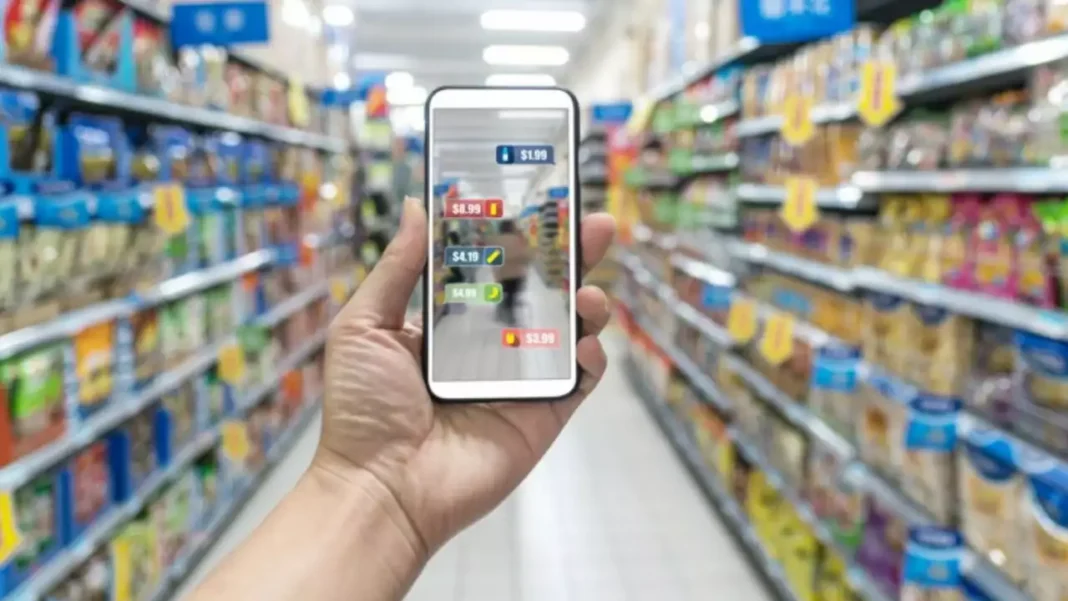The internet has brought about a democratization of social spaces, providing ordinary individuals with the tools to express themselves. In a similar vein, the internet is leveling the playing field in markets, offering equal opportunities to both major and minor players. As the Indian e-retail market anticipates substantial growth and a significant portion of the population, particularly in Tier-II and Tier-III towns, engages in online shopping, formidable challenges arise for major FMCG companies. These companies traditionally dominate traditional distribution channels, where new entrants struggle to scale up rapidly and emerge as competitors within a few years.
The rapidly growing e-retail sector has the potential to foster the emergence of numerous small brands, each gradually chipping away at the market shares of larger brands in order to thrive.
A report jointly conducted by Bain & Company and Flipkart, foreseeing significant growth and substantial untapped potential in India’s e-retail sector, should serve as a cautionary signal for major FMCG companies, despite appearing to hold promising prospects for them. While these large corporations have undoubtedly considered the future growth potential in e-retail and are actively exploring opportunities in this sector, what they may not have fully considered are the profound and disruptive impacts on the retail landscape. Factors such as emerging consumer technology fueled by artificial intelligence, decreasing logistics costs, and the swiftly changing consumer behavior influenced by volatile social and cultural trends could introduce considerable unpredictability.
E-retail is poised to surpass the $160 billion (over INR 13 lakh crore) mark by 2028, as indicated by a recent report from Bain & Co. Anticipated to be in the range of $57-$60 billion (INR 4.75 lakh crore to INR 5 lakh crore) in 2023, with an annual shopper base of around 240 million, the e-retail market has witnessed an annual addition of $8-$12 billion since 2020.
“Long-term fundamentals of India’s e-retail industry, including affordable data, improved logistics and fintech infrastructure and strong digital consumer ecosystems remain intact,” Bain’s Innovation & Design Capability Area, Partner and Global Leader, Arpan Sheth said in a statement.
The e-retail market is set for substantial growth in the upcoming years, as online spending presently constitutes only 5-6 percent of the total retail spending in India. This is in stark contrast to the United States, where online spending comprises 23-24 percent, and China, where it is as high as 35 percent, underscoring significant potential for expansion. According to the report, the majority of retail expenditure in India (94-95 percent) remains offline, with general trade constituting 87 percent of the overall retail spend. The report further estimates that over 60 percent of internet users in India have yet to embrace online shopping.
Major FMCG corporations are making significant strides in e-commerce, making concerted efforts to leverage its extensive potential. Backed by substantial financial resources, robust brand recognition, and significant investments in technology, these companies are poised to ride the surging wave of e-commerce. However, their vulnerability lies in the rapid rise of Direct-to-Consumer (D2C) brands, which constantly keep them on their toes, presenting a perpetual and looming threat.
The expanding e-retail sector is giving rise to an increasing network of small sellers. “The seller ecosystem is also exploding to cater to these consumers,” the report says. “Twice as many sellers were added in 2022 compared to 2021. Two-thirds came from Tier 2+ cities, and three-fourths operate in the lifestyle, home, and electronics categories. Insurgent online-first brands have emerged as a fast-growing seller cohort, with more than threefold revenue growth from 2020 to 2022. These brands resonate especially with Gen Z consumers.”
Over 50% of the existing total seller base originates from seven cities, specifically Delhi NCR, Surat, Jaipur, Mumbai, Bengaluru, Hyderabad, and Kolkata. The noteworthy influx of new sellers from smaller cities suggests that major companies will encounter competition from numerous smaller brands. These emerging brands are poised to be closer to consumers, aligning with the fact that a significant portion of consumers resides in smaller towns and cities. Direct-to-consumer (D2C) brands, unencumbered by legacy issues, are recognized for positioning themselves in proximity to consumers.
“There is a large FMCG market and the per-capita consumption in many categories is low. But the job to increase penetration is for larger companies and when D2C targets their consumers offline, they will face a bigger challenge,” Soumya Mohanty of Kantar had said in a report early this year.
Over the past few years, several Direct-to-Consumer (D2C) brands have demonstrated that sizable retail brands can be established through modern digital channels, challenging the notion that a traditional retail approach is essential in today’s retail landscape. These D2C brands have successfully cultivated a more profound connection with customers. This highlights a changing consumer mindset, indicating that consumers are increasingly at ease with online transactions and place value on the overall shopping experience in addition to high-quality products.
Historically, marketplaces have harnessed the potential of the festive season by introducing extensive sales campaigns. Direct-to-Consumer (D2C) brands, however, had refrained from participating in sales during this period due to concerns about high return-to-origin (RTO) orders and customer acquisition costs. Yet, GoKwik reported last month that D2C brands on its network experienced a significant surge in order volumes on its platforms during the peak marketplace sale period this year, marking a reversal of the trend observed in recent years when these brands typically witnessed a decline in orders during marketplace festive season sales. Throughout the week-long marketplace sales, the Gross Merchandise Value (GMV) for D2C brands on the GoKwik network increased by 1.5 times in 2023 compared to the previous year. Order volume and GMV saw respective surges of 43% and 52%, aligning with the simultaneous growth in order volumes on marketplaces. A year prior, brands on the GoKwik network had experienced a 7% decrease in order volumes and a slight 6.5% uptick in GMV.
“This reversal in trend is a sign of natural progression of the eCommerce market. It means that the market is deepening. It shows that D2C is rapidly gaining popularity among shoppers, who are looking out for best offers and shopping experience,” said Chirag Taneja, co-founder and CEO, GoKwik, adding that the trend reversal did not imply that shoppers preferred D2C over marketplace or vice versa.
Another source of concern for major FMCG players could be the evolving consumer preferences, particularly among the masses who are transitioning to online shopping. According to a Redseer survey earlier this year, affluent consumers tend to favor premium products across various categories and are open to exploring new product lines. On the other hand, strivers prioritize essentials and favor sachetisation, while mass consumers are highly value-conscious, emphasizing the optimization of price over quality. The survey highlighted that nearly 60% of these consumers are willing to purchase unbranded products, provided they offer the right value. This inclination was even more pronounced in categories such as home & kitchen and fashion.
Major FMCG corporations must adopt greater agility and experimentation to seize the expansive emerging opportunities and ward off Direct-to-Consumer (D2C) brands. While these D2C brands may not necessarily scale up to directly compete, their growing numbers have the potential to erode market shares gradually with incremental impacts.


